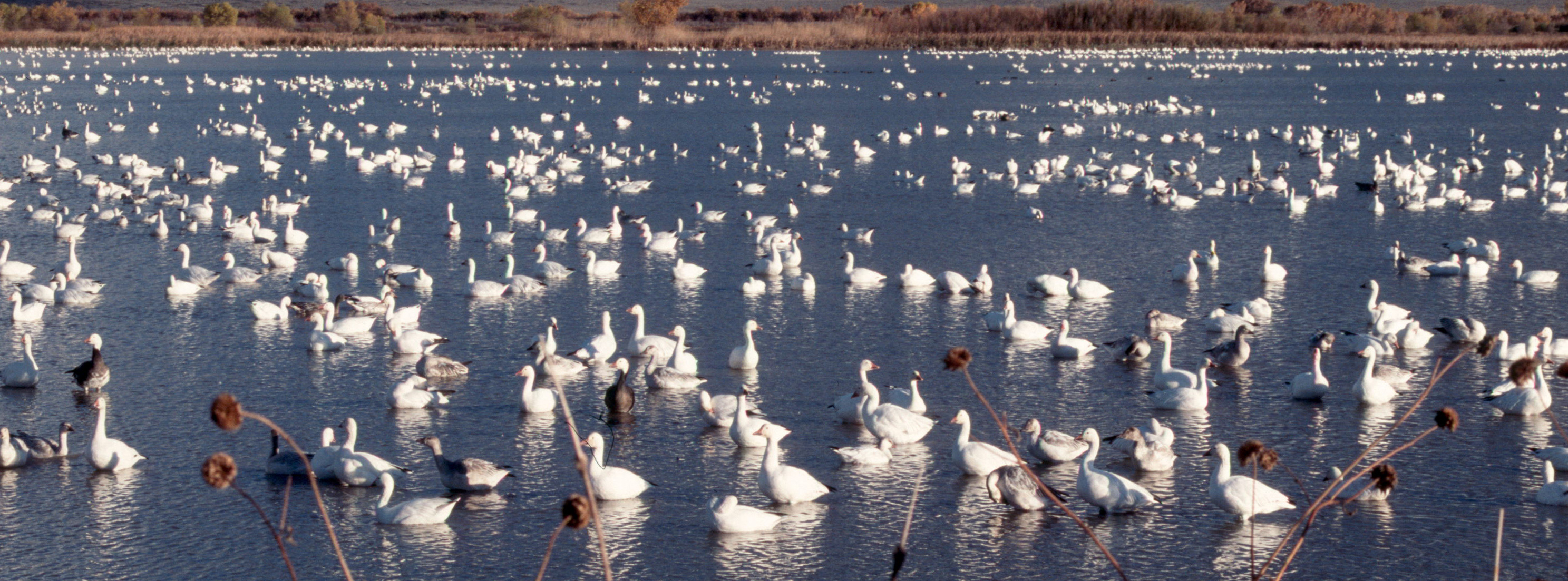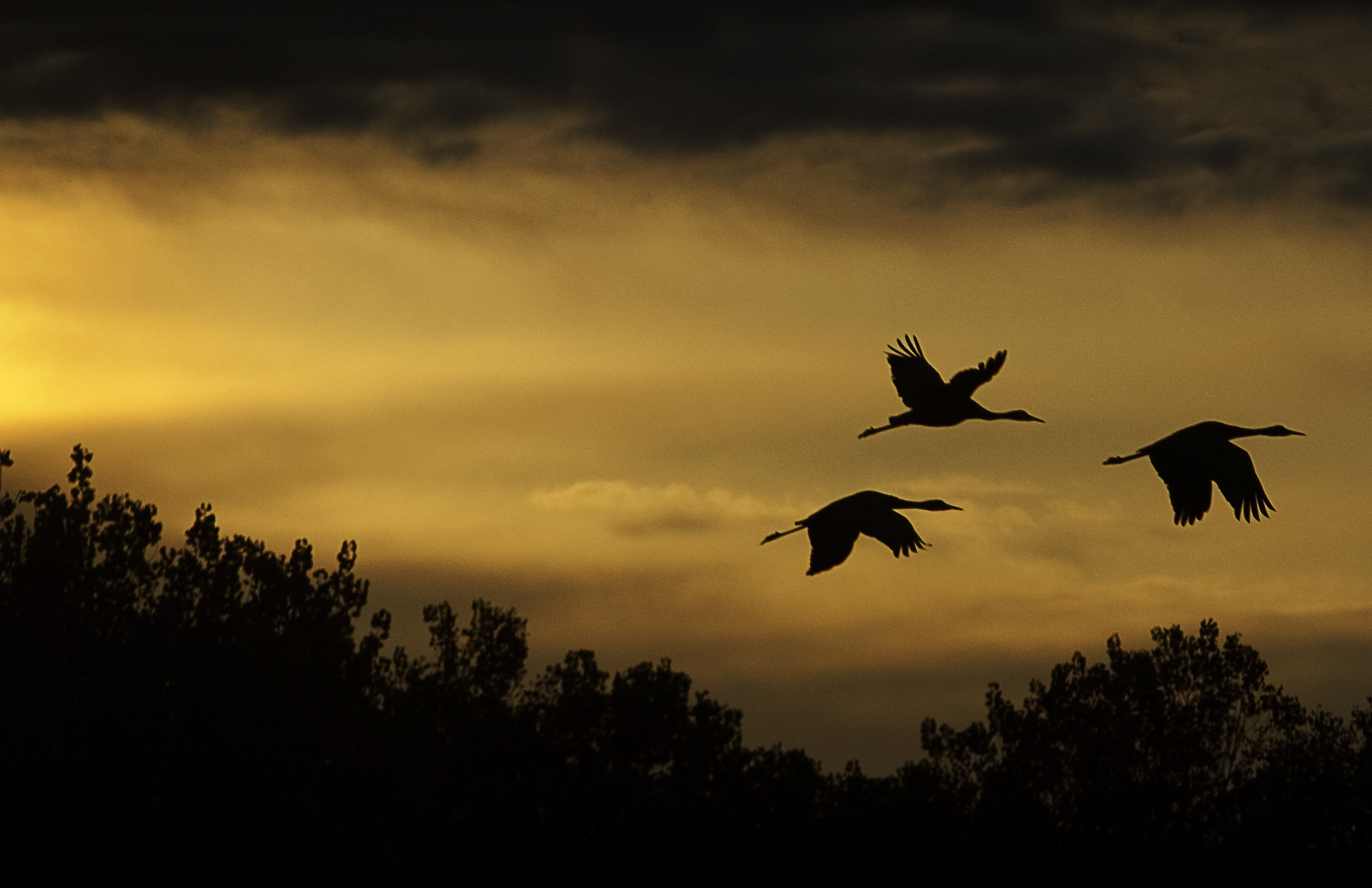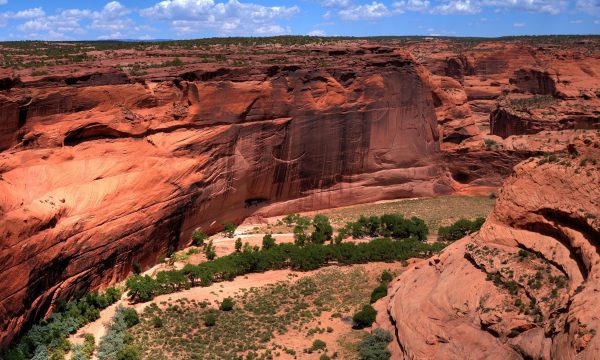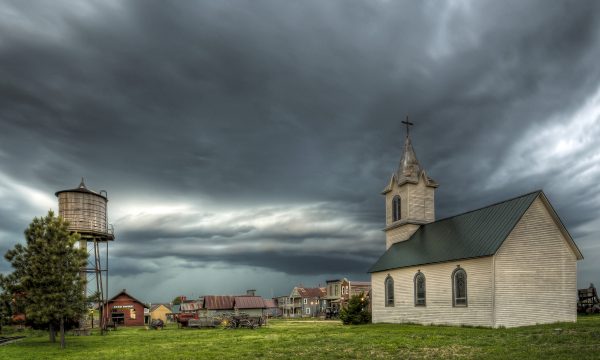Bosque del Apache is Spanish for “Forest of the Apaches” and is rooted in the time when the Apaches, who routinely camped in the floodplain forests, were observed by the Spanish. Today, Bosque del Apache is one of the most spectacular wildlife refuges in North America. The skies darken each fall when cranes, Arctic geese, and many different species of ducks gather here to winter. Food-seeking snow geese suddenly flutter off by the thousands when spooked by an approaching coyote. At dusk, landing flight after landing flight can be seen as geese and cranes return to nest in the marshes.
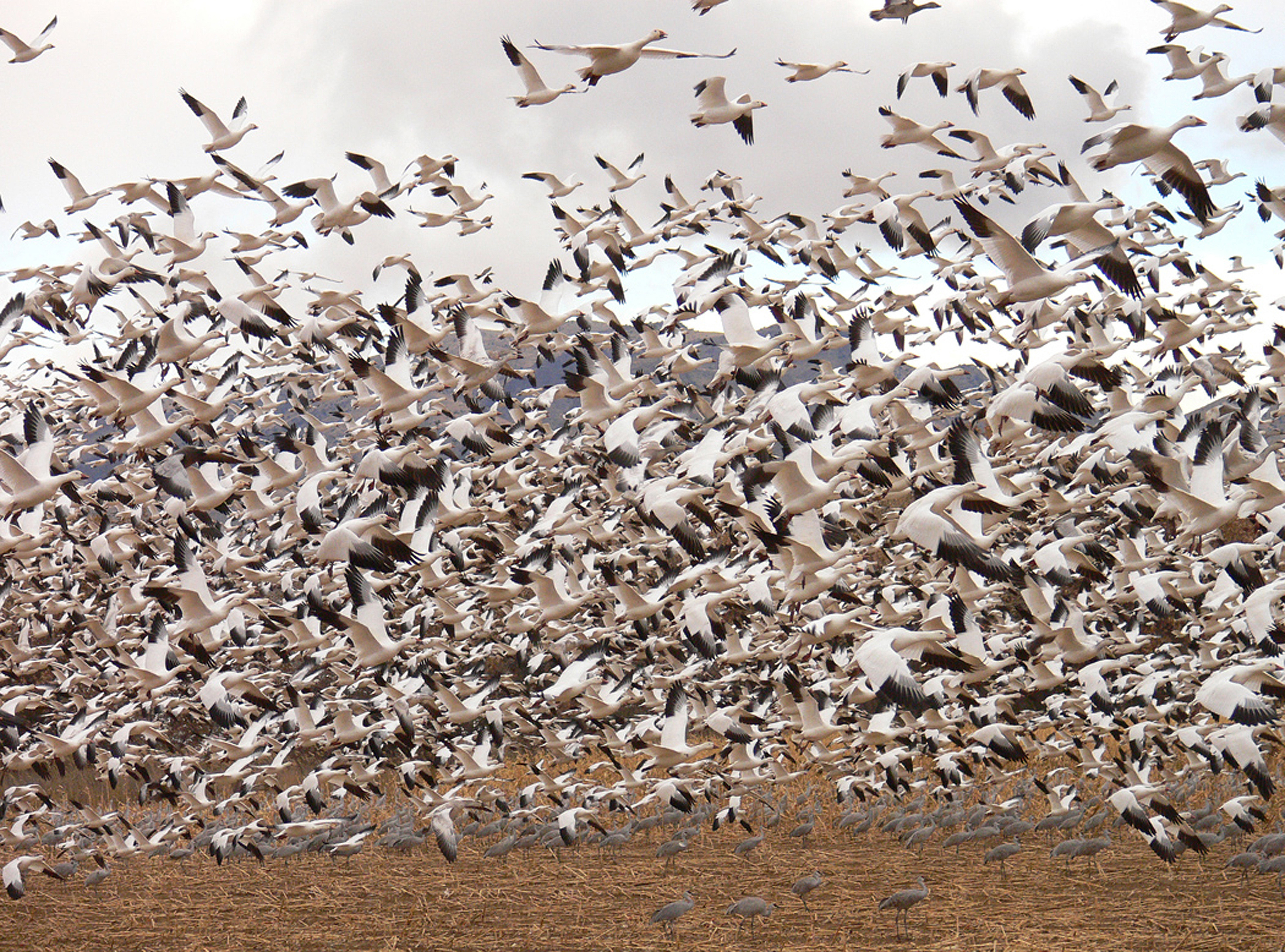
The nature reserve is located near Socorro, a small town on the Rio Grande, about 75 miles south of Albuquerque. The unique marsh landscape covers an area of about 57,000 acre. A 12 mile long, drivable loop trail and several viewing platforms offer visitors the opportunity to immerse themselves in an impressive world of birds. During the winter months (between November and March), more than 10,000 Canada cranes and about 20,000 Arctic barnacle geese and other bird species can be found here. They are migratory birds in search of food and come from different regions.
The snow goose, for example, breeds in northern Canada, northwestern Greenland, Alaska and northeastern Siberia. It belongs to the duck family and was hunted for centuries. With the conversion of previously natural areas to agricultural terrain, such wintering areas were lacking. During their long journey, they form a tip-forward V-shaped flight formation. In this way, they take advantage of the updrafts that develop behind the wings of their forward neighbor. The strongest bird is usually the leader, but is replaced in between by other flying companions. Snow geese fly at an average speed of 35 miles per hour, but can reach up to 60 miles per hour. The formation flight also provides protection from attackers. The enemy sees only a huge dark cloud, which changes shape and direction in seconds.
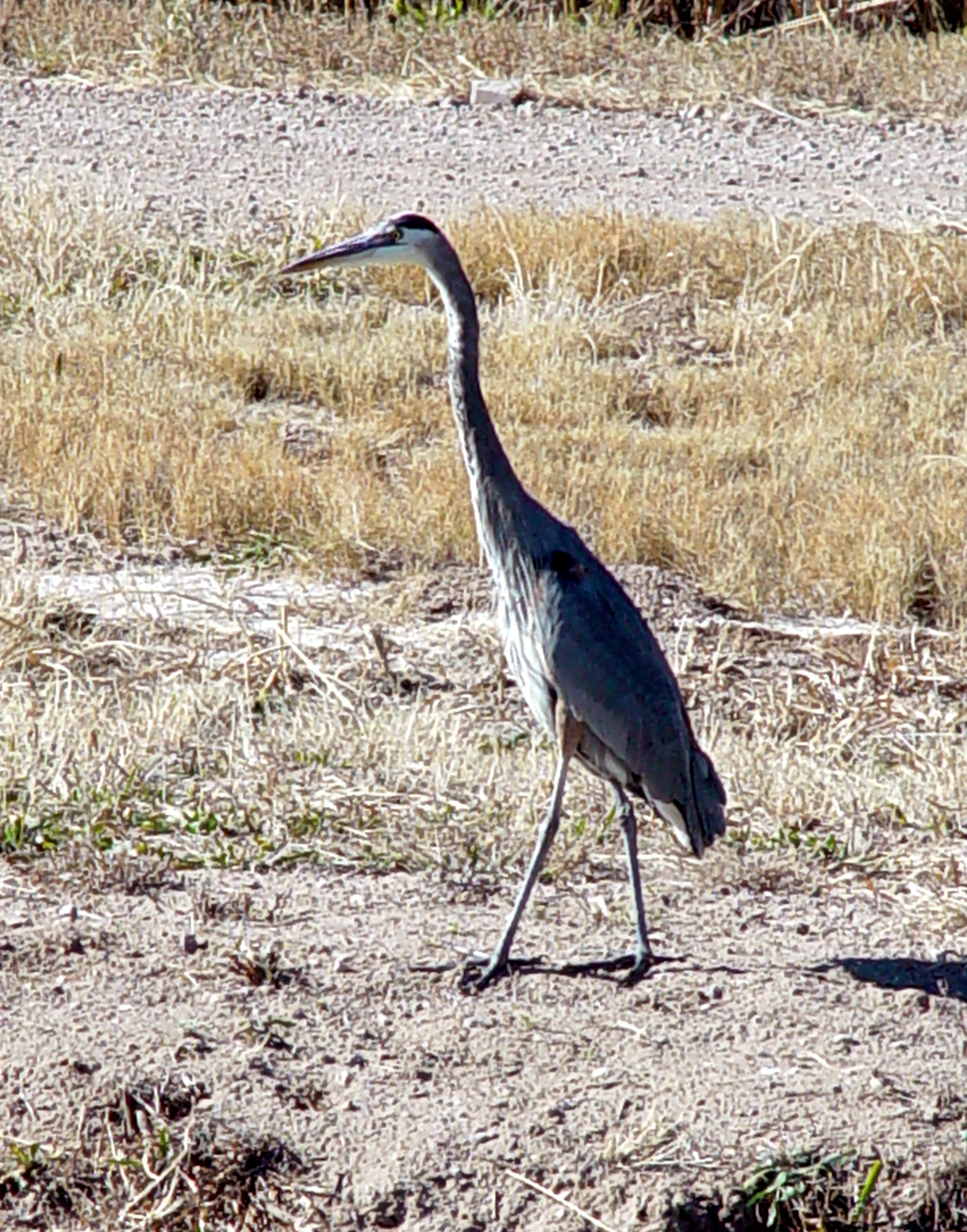

The Canada crane, also called the sandhill crane, breeds in the Arctic regions of northern Canada, Alaska and eastern Siberia. The population is estimated at 650,000 worldwide. It winters mainly in California, Texas, New Mexico and northern Mexico. Body length ranges from 35 to 47 inches, wingspan ranges from 62 to 82 inches, and weight ranges from 6 to 13 lb. They also fly a V formation at an altitude of about 6,500 feet. In a day they travel between 187 and 500 miles at a speed of 37 to 50 miles per hour.
The routes that migratory birds fly are called flight paths or migration routes. Migratory birds do not always take the shortest route for their long journey. They often make a detour of several hundred miles to avoid flying over the open sea or deserts. In North America, there are four major flyways – one along the Pacific coast, one along the Atlantic coast, one down the Mississippi run, and one over Labrador along the southern Hudson Bay.
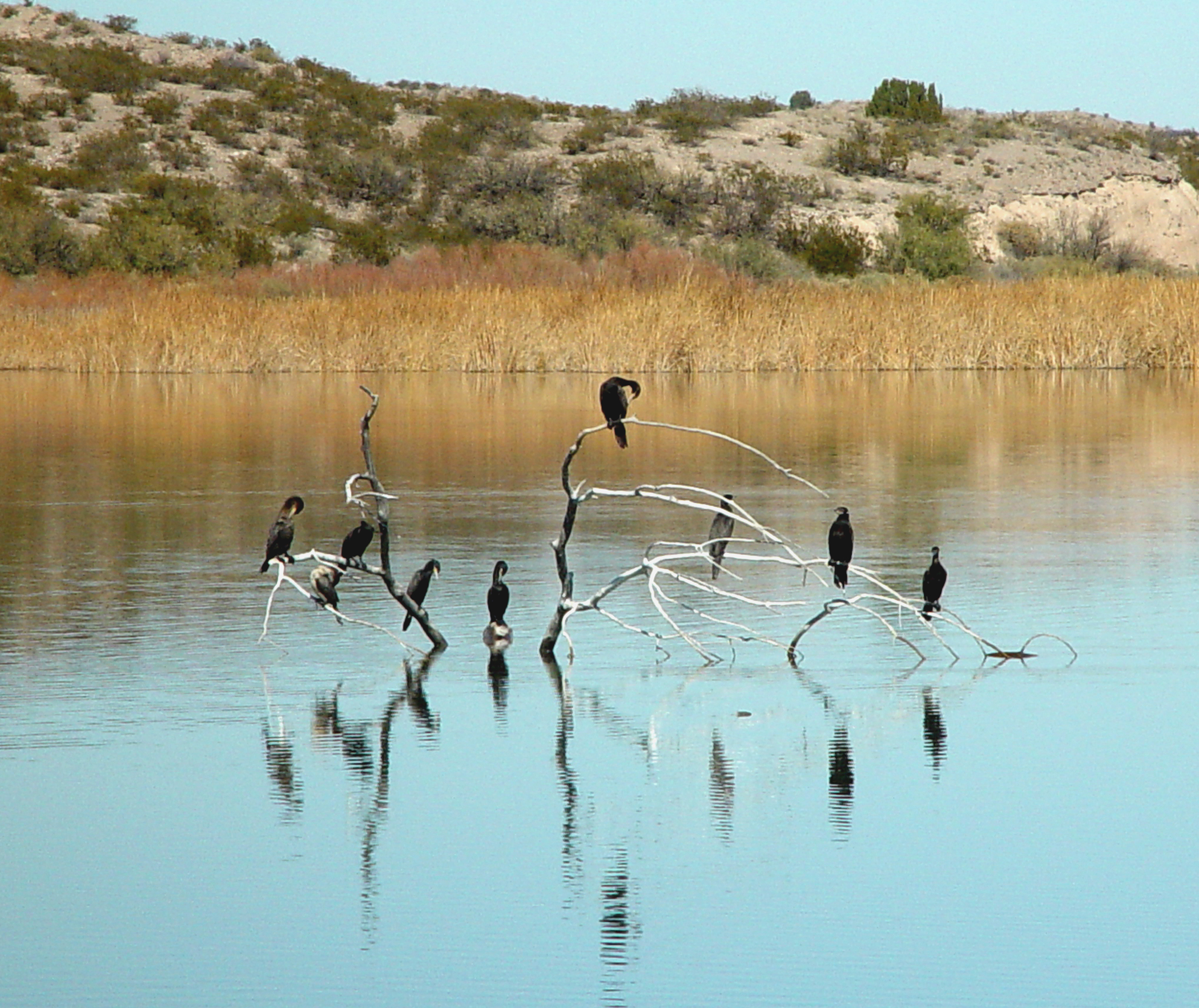

Where do bird species get the energy for such a long-distance flight? Scientists took a wind tunnel to help them. Birds were trained to fly on the spot for up to eight hours. During the flight, their heart rate was measured and they were weighed before takeoff and after landing. This allowed conclusions to be drawn about energy and oxygen consumption. Accordingly, it was found that they first accumulate a fat cushion, but this is not enough to cover such distances. The answer is that the animals break down their organs during the course of a journey. The pectoral muscle shrinks and the digestive tract shrinks by half. This releases proteins that provide the necessary energy. When they reach their destination, everything regenerates within a few days.
Bosque del Apache was artificially created as early as 1939 as a refuge for various migratory bird species, primarily from northern states, which spend the winter months there before migrating north again in the spring. Crops are grown in part of the area to ensure the feathered friends have enough food to eat.
At 5 am on a November day, a group of people gathers in front of the ranger station (forestry station) to forget everyday life and go on a little adventure. An hour before sunrise, little morning wind and pleasantly mild temperatures for the time of year are absolutely ideal conditions. Steve, a local birder, gives us a brief introduction to the wildlife. Not only bird species but also coyotes, lynx, pumas, mules or snakes find their habitat in the Bosque del Apache.
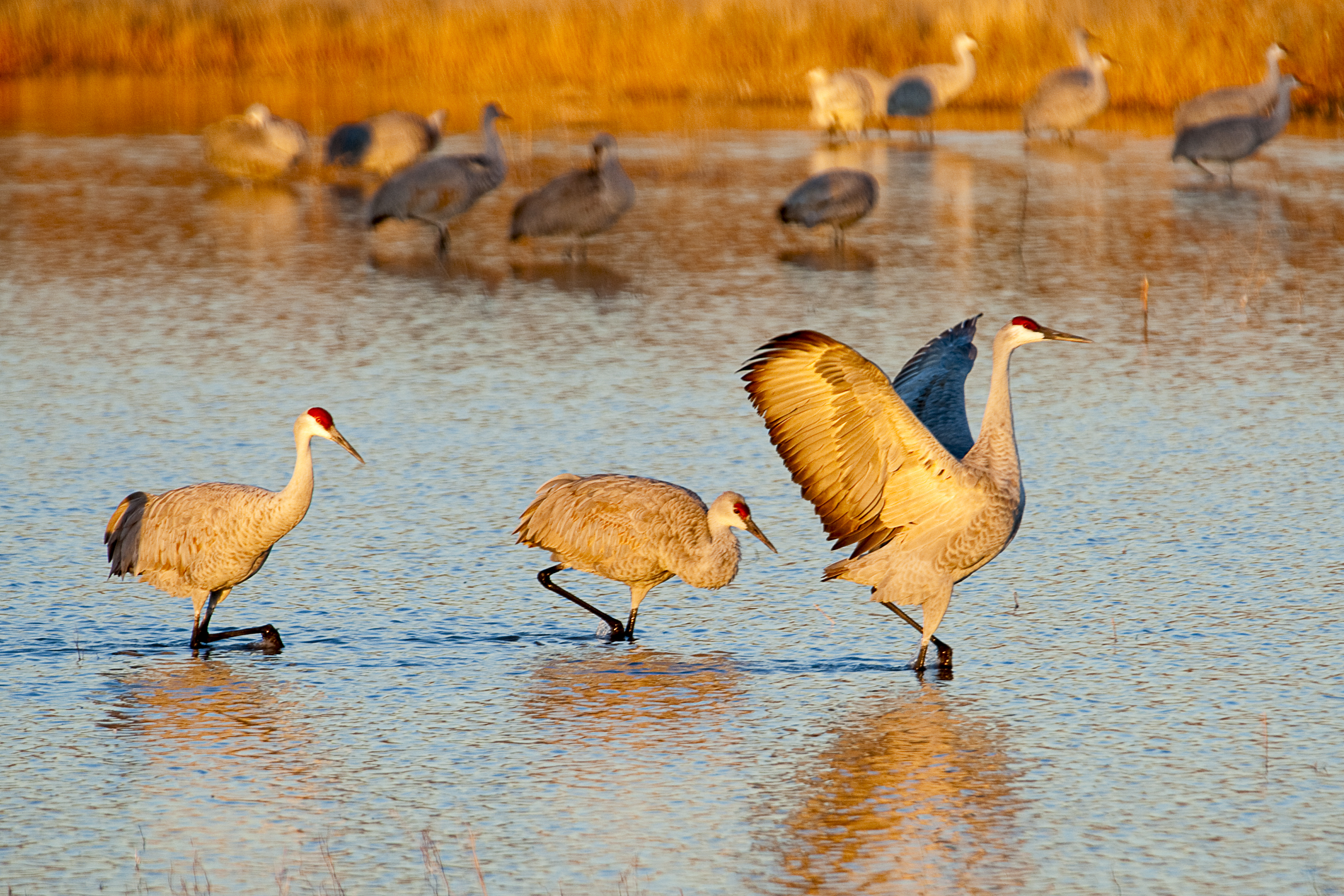

At 6:15 am we approach the main entrance and reach the tour loop road. As ordered for the tourists, the heraldic animal of New Mexico, the Roadrunner (racing cuckoo) races fearlessly across the road in front of our minibus. The roadrunner has numerous special features. It can run up to a speed of 19 miles per hour, can lower its body temperature to 57 degrees Fahrenheit, just like the hummingbirds, and is able to cover its liquid needs exclusively from food. It can change its direction in a matter of seconds; therefore, the Indians attribute to it the following spiritual meaning: do not plan so much, but rather act, and if necessary, jump over your shadow and change course!
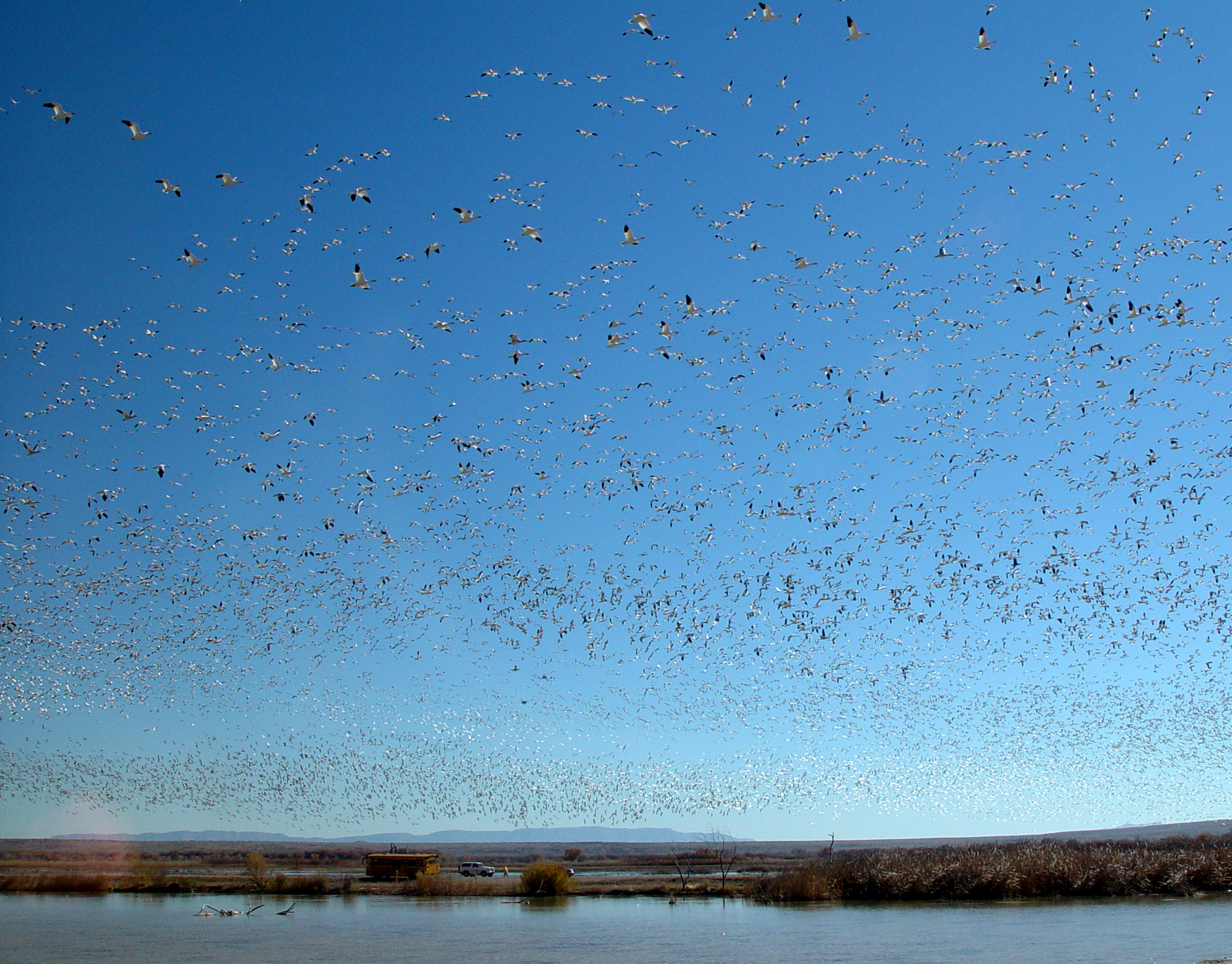

We turn off onto the farm loop trail and walk to a viewing platform to arrive in time for the mass takeoff of the cranes and snow geese. There is still absolute morning silence, the air smells of musty rotten earth, marsh grass and leaves. The silence is disturbed only by the shutter releases of the cameras, especially when Steve draws our attention to a bobcat that disappears into the endless landscape at a fast gallop with prey from the brush. With the first ray of sunlight, a breathtaking soundscape spreads out. The sky turns red. The cranes arc their heads and necks in the direction of flight for ten to twenty seconds in order to synchronize their departure by vocal signals among themselves. Then they push off and fly with their necks stretched out to surrounding feeding grounds, where they stay all day. For minutes, wild chatter and wing beats resound. The sun has risen, the flocks of birds spread out in all directions, and we find ourselves in the midst of a gathering of people with cameras on tripods, as if at an exhibition of photographic equipment. We leave the scene, but all agree that we have witnessed something extraordinarily spectacular.
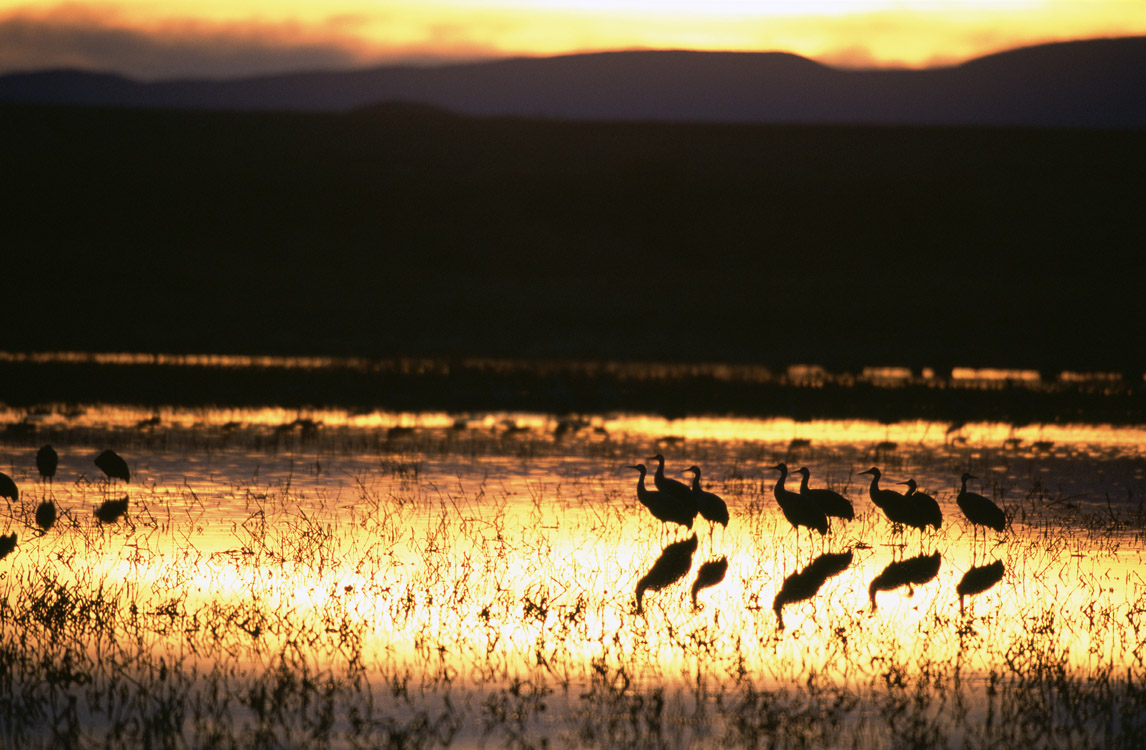

The setting evening sun is reflected in a pond bordered with reeds. We are on the “flight deck,” a fly-in lane for birds. Photo experts gather around, exchanging last experiences with like-minded people and sharing their joy of cameras and photography. First, the scene is viewed without a camera, then the appropriate perspective and position are chosen, then the tripod is placed, the appropriate frame is chosen, and that’s it. All eyes are directed to the sky full of expectation. After half an hour, people become a bit impatient. Nature is obviously not a timer that proceeds according to a precise plan. Exposure meters are used and again tips are distributed: How do I set the exposure time? Manual or automatic? In the midst of heated discussions, chattering noises can be heard from a distance. The voices fall silent as a group of snow geese prepares to land. The white birds gleam in the evening light, matching the orange-red color of the sky. A little later the cranes follow, which have been called lucky birds by the Chinese for thousands of years. Whether they really bring luck we do not know. However, one thing is certain, we are lucky enough to observe an overwhelming flight in. Spellbound and in awe, we watch and listen as hundreds of cranes approach, screeching and trumpeting as they make an elegant landing approach. The cranes look for their roost, the crowd dissolves contentedly and makes its way home.
The winter months from November to March are the best time to visit Bosque del Apache National Wildlife Refuge. However, the refuge is also a popular destination in the summer and provides a large number of different habitats for various bird communities. For example, the Hummingbird; it needs a little more warmth in winter and moves to Mexico. In summer, the small bird with its metallic green back and red neck loves the numerous forest and meadow flowers that provide energy-rich food such as nectar and insects. It swoops around the flowers with a high frequency of 40 to 50 wing beats. The omnivorous Wild Turkey also finds what it needs here. Although it is very heavy, unlike domestic animals it is an excellent flyer and offers the observer interesting flight formations, especially when danger is approaching.
Those who prefer a mix of nature and culture should visit the next Festival of the Cranes from December 6 – 9, 2023.
In advance, there is the Crane Fiesta, a virtual Zoom event with webinars, videos, etc. Of course, it can not replace the live spectacle, but would be a good alternative for those who cannot make it to the festival this year. More info and exact dates at Friends of Bosque del Apache
Bosque del Apache National Wildlife Refuge
Soccorro, NM 87801 * Tel: 575-835-1828
www.fws.gov/refuge/Bosque_del_Apache
Photos: Bosque del Apache, Friends of the Bosque, NM Tourism Office
